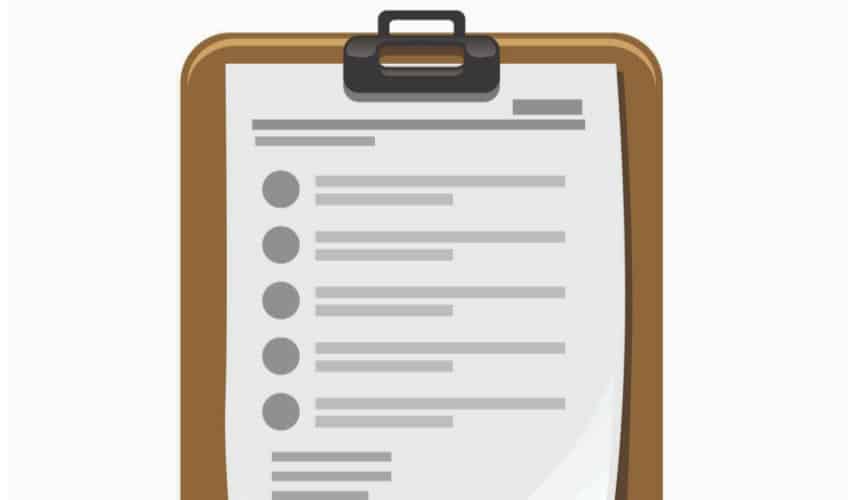During my first year of college, I learned that starting a side project was essential, but I didn’t know how to start one. So, with some research and testing, I figured out how to start a college student side project.
So what are the 5 steps to start a college student side project?
- Refer to your ideal career as a starting point
- Identify the skills you need to become a professional
- Brainstorm a list of side projects and choose one
- Create a simple project plan with a timeline
- Execute your plan, adjust along the way, and don’t give up
Now that you know the steps, let’s talk about them in more detail.
Why start a side project?
Before we get into the steps, you need to understand why you should start a college student side project. Let me ask you, how do you plan on landing a job? Your education alone won’t be enough to set you apart from other candidates.
Remember, there are hundreds, maybe thousands of other students in your program. In order to stand out from the rest, you need to have hands-on experience and practical skills. This is what side projects will provide you with.
Having a side project is also a great way to spend your free time. It’s productive, smart, and very practical. You can only party and sit around for so long.
Step 1. Refer to your ideal career as a starting point

Ideally, you want your side project to help you gain experience to become an expert in your ideal career. So, we need to refer to that career as a starting point. Answer this question:
- What is your ideal career?
If you don’t know what your ideal career is, take some time to figure it out. Research as many careers as you can and get a good understanding of what you want to do. Feel free to look at this long list of careers and job titles.
My personal example
I figured out that I wanted to become a digital marketer after I worked over a dozen jobs. I started as a factory worker, server, and cashier, and then I moved into business-oriented positions. This includes sales (retail and door-to-door), multilevel marketing and web design. Finally, I found something called digital marketing and I fell in love with it.
Step 2. Identify the skills you need to become a professional

Now that you know your ideal career, it’s time to identify the skills you need to become a professional in that career. Here are some things you can do to help you out:
- Write down a list of skills you already know someone needs
- Look at job descriptions
- Use Google or YouTube to analyze what professionals do on a daily basis
- Look up “How to become an expert in (your ideal career)” online
- Volunteer or work in a company to assist and shadow a professional
Do whatever you need to identify all the skills needed to become a professional for your ideal career. I highly recommend doing the last point on the list above. It’s one of the best ways to get a feel of what it takes to become a professional.
My personal example
To identify the skills needed to become a professional digital marketer, here’s what I did:
- I went on job searching sites like Indeed, LinkedIn, and Workopolis and typed in digital marketing. I looked at as many job postings as I could and wrote down common responsibilities and requirements I found.
- I worked for temporary jobs in marketing with the intent of shadowing the digital marketers. I asked them questions on a regular basis and also lent them a hand with their daily activities.
- I subscribed to digital marketing experts on YouTube and paid close attention to what they had to say.
Step 3. Brainstorm a list of side projects and choose one

Once you have a list of the required skills you need to become a professional in your ideal career, it’s time to brainstorm a list of side projects to work on. Here are some things you can do to help you come up with a list:
- Write down any side projects that come to your head
- Research projects that professionals work on
- Look at the job responsibilities for your ideal career and research how to do them
- Think about what you want to learn
After you’ve created a list of potential side projects, you’ll need to choose one to work on. How do you choose a side project to work on?
- Be realistic. Think about a side project that you can realistically work on for the next few months or even year. Be mindful of time, budget, and effort.
- Fun fun fun. You’ll want to choose a side project that’s fun to work on. The more fun it is, the easier it will be to commit to it.
- Set a goal. Think about what you want to achieve. Choose a side project that’s going to help you reach your goal.
- Solo or with friends? If you love working with others, you may want to choose a side project that you can work on with your friends.
My personal example
I first started by researching “How to start your own digital marketing business.” From here, I was able to come up with a pretty big list of side projects. I also looked at the businesses that other digital marketers had. I found that they always have websites and social media platforms in which they monetize.
So, I did some more research and stumbled upon something called affiliate marketing. I found that it didn’t require a large budget to start and it also encompasses activities I enjoy doing. That’s how I made my choice, and by the way, this website is the side project I’m working on 😊.
Step 4. Create a simple project plan with a timeline

Congratulations on choosing a side project to work on! If you’ve made it this far, you’re doing great a job. Like any project, you need to have a plan with a timeline, otherwise, you may end up completely lost. To create a project plan, you need to do some research.
Start by researching what other people are doing or have done. You’re not going to copy exactly what they’re doing, you’re just looking for more information on how to start. Here are some things you can do:
- Search around for an affordable or free course on how to start your side project
- Google or YouTube “How to get started with (your side project)”
- Analyze what other people have done and look for a starting point
Once you have a good understanding of your entire side project, it’s time to create a project plan. You can refer to this professional plan if you’d like, or follow this basic one instead:
- Open Microsoft Word or any other writing tool to organize your plan.
- Create a list of tasks to complete and include a description and estimated due date.
That’s all you need to do, and I’ll explain why. This side project is something you’re going to work on whenever you have free time. You’re not going to be an expert at whatever it is you’re doing. It’s all about gaining experience and acquiring new skills.
You don’t need a very specific and detailed plan because you don’t know what you don’t know. You’re going to continuously learn new things and make changes to your plan along the way. If you try to create the perfect plan, you’ll find that things won’t go accordingly.
My personal example
I purchased a beginner’s course when I first got started with affiliate marketing. The author of the course had a project plan, but I couldn’t keep up. This was very discouraging and almost made me quit. I decided to forget about the author’s plan and created my own.
At first, I tried to create the perfect plan, but I found that there was so much I didn’t know. It was impossible to create one. So, I created a simple project plan which I was going to adjust along the way, and it felt much better. It was fun, and I no longer felt the pressure of having to keep up with a professional plan while in college.
Step 5. Execute your plan, adjust along the way, and don’t give up

We’re finally on the last step. It’s time to execute your plan and make adjustments along the way. Take a look at the project plan you created in step 4. Try to complete all the tasks before their due dates. Make changes as necessary and don’t worry if you have to push back due dates.
Continue to refer to any guides or courses you’ve researched or purchased. Because this is a college student side project, you need to somewhat push yourself in order for it to be successful. Dedicate at least 1-2 hours a day to work on your side project. Imagine what you could accomplish in six months or even a year!
Don’t give up because you never know where this could go. For some inspiration, check out these amazing business ideas that started as college student side projects.
My personal example
I started to love the side project I was working on. I made sure I was spending at least 3 hours a day working on it. I constantly made changes to my project plan because I was learning new things along the way, but it was fun!
I gained a new passion, new skills, new knowledge, and most importantly, a sense of direction of what I wanted to do in terms of a career.
Conclusion
Like I mentioned in step 3, this website is the side project I’m working on. If you saw the first two websites I created, you would die of laughter. Overall, this college student side project helped me land jobs I never would have got without it. I’ve learned so much in the past two years and I’ve never been happier. I hope you can find similar results.
Get started today and I promise you’ll thank yourself later. If you have any questions or comments, make sure to leave a comment down below!
What did you think about this blog? Comment below! Also, subscribe to my newsletter for updates on new content, including videos on YouTube!


